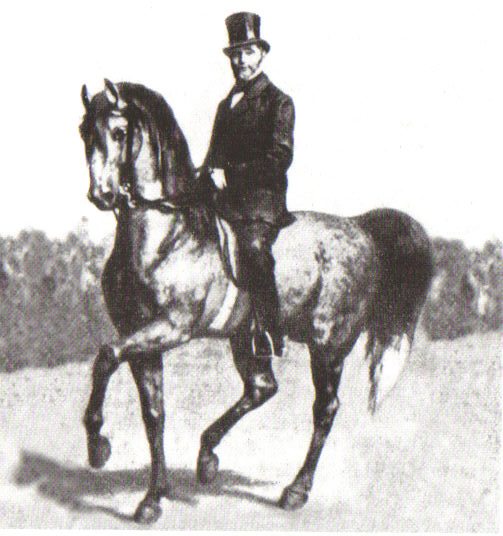
Gustav Steinbrecht – the most influential modern master of them all
It is interesting that Nuno Olivera, who is often claimed as the patron saint of the super classical clique, should, when discussing the Shoulder-In, turned for his inspiration, not to the inventor of the movement, La Guérinière, but to the nineteenth century German riding master, Gustav Steinbrecht.
In his Reflections on Equestrian Art,Nuno writes:
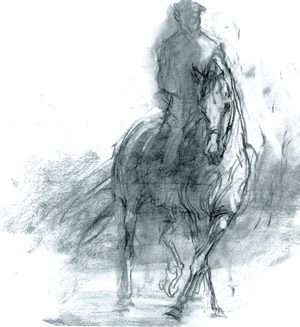
“I never begin the training of a horse by giving him a lesson other than the shoulder-in. La Guérinière in his work entitled École de Cavalerie explains the position and the aids necessary to achieve this exercise. In modern times, it is not Salins, as many believe, but rather Gustav Steinbrecht, as author, who gives the description of the exercise most conscientiously and painstakingly.”
(Nuno is referring to Commandant J. de Salins who in 1925, published, Méthode de dressage rapide du cheval et d’obstacle).

For more information on how Proxtexin can help your horse – www.iahp.com.au/australia/protexin – call 1800 801 201 (AUS) or 0800 424999 (NZ)
The son of a cleric, Gustav was born in Saxony in 1808. He studied veterinary medicine in Berlin, before becoming a student of the famed riding master, Louis Seeger in Berlin-Moabit. Later, he would marry Seeger’s niece.
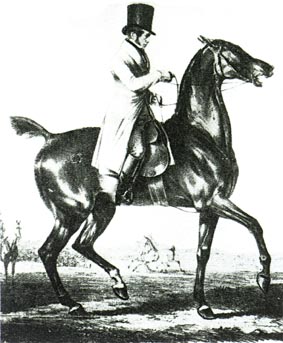
Louis Seeger (1798 / 1865)
He established his own riding school in 1834, in Magdeburg, but he returned to Berlin in 1842 to work in the school of his teacher Louis Seeger. This school, the Seegershof, had become the most famous in all Prussia.
In 1849, Steinbrecht became the director of the Seegershof and began taking the notes that would become his posthumously published masterpiece, “Das Gymnasium des Pferdes”.
In 1859, he bought a manege in Dessau in the state of Anhalt, where he remained for 7 years, training high school horses. Some of them were sold to the great circuses of the time, such as the Circus Renz.
In 1865, Steinbrecht moved back to Berlin, where he remained until his death in February 1885. After Steinbrecht’s death, his student Paul Plinzner, the future Stallmeister to Emperor Wilhelm II, edited the notes Steinbrecht had left behind and added the chapters on the canter and high school dressage. The first edition of “Das Gymnasium des Pferdes” was published in December 1885. Plinzner published two edited versions in 1892 and in 1901. A fourth edition appeared in 1935, prepared and annotated by Plinzner’s student Col. Hans von Heydebreck. This 4th edition is the one that was translated into French and English.
According to Alois Podhajsky, the great value of the book lies in the fact that Steinbrecht himself did not start to put together his notes until he had been training horses for more than 30 years, which gave him a thorough grasp of the material based on a great deal of practical experience.
Steinbrecht was an advocate of the English saddle, not just for hunting and steeplechase, but also for dressage riding, because it demanded a balanced seat on the part of the rider:
“While the old masters, on their dressage saddles knew how to advance the art of riding to a high level under greater expenditures of time and strength on the part of horse and rider, we, if we reach the same level with our lighter, more agile, and nobler horses, will have produced a more perfect art since we have attained this goal with nothing but simple, natural means.”
(Page 6 of the Xenophon Edition – how indebted we all are to Ivan Berzugloff not only for his splendid magazine, Dressage & CT, and his excellent Xenophon classics…)
Along with the change of saddles, came a change of seat, or there should be a change, according to Steinbrecht:
“I must remind the reader again and again to give up old prejudices and to derive the rules for the rider’s position only from natural principles. The unchanging so-called prescribed seat to which many instructors stubbornly adhere is the reason that the art has such a bad reputation. It prevents the student from becoming independent on his horse since with such a seat, he will lack the necessary feeling to be able to correctly evaluate his horse’s carriage and movement. The rider who has been schooled in such a seat will present, after a long struggle, not a thoroughly schooled horse – that is a horse whose natural talents have not only been channelled and made subservient by dressage training but have also been developed by suitable exercises – but a wooden machine which, although working mechanically is devoid of all elasticity and freshness in its way of going. Such horses are certainly not likely to produce enthusiasm for the art because their dull, mechanical way of going fatigues the rider and wears the horse out before its time. For that reason, many riders feel safer and more comfortable on a horse with good conformation that moves in its natural carriage, than on a confused, so-called dressage horse that has been robbed of all its vitality. Whoever does not want to degrade this beautiful art to a mere trade – an art that has been held in high esteem from early times and will continue to be appreciated as long as there is courage and chivalry in the human race – should first be diligent in exercising his own body and making all its parts agile and mobile, so that his stiff limbs will not act as shackles on better understanding and feeling.”
While Steinbrecht was very much closer to the modern dressage style than any of his predecessors, there are still a few crucial differences, for instance, horses were still ridden predominantly with one hand, although styles were changing:
“However, guiding a horse with the left hand alone requires a completely trained horse that is capable of responding to the curb only. The old masters, who had time and means for such thorough work, knew only the curb bit for the well-ridden horse and placed their little finger between its two reins. For preparing the green horse, they used the cavesson. Today, since we have once and for all added the bridoon and its two reins to the curb bit, we admit right from the start that we do not intend to, or are not able to, work out horses to such perfection that they can be mastered under all circumstances with only the curb reins in the left hand… Because of the differences in our bits, and primarily the less perfect carriage of our horses, we must also modify the hand aids just as we must adapt our seat to the changed conformation of our present-day horses, and to the English saddle.”
By the time of Steinbrecht, dressage is moving away from the fixed outline of the Renaissance horse – even in 1909, this photo of Otto Lörke looks much more ‘modern’ – and Lörke played a crucial role in shaping dressage in the twentieth century. He trained the 1936 gold medalists Heinz Pollay and Kronos, and the silver pair, Friedrich Gerhard and Absinthe (Alois Podhajsky was third on Nero). During this period he also contributed to the development of Felix Bürkner’s school quadrille.
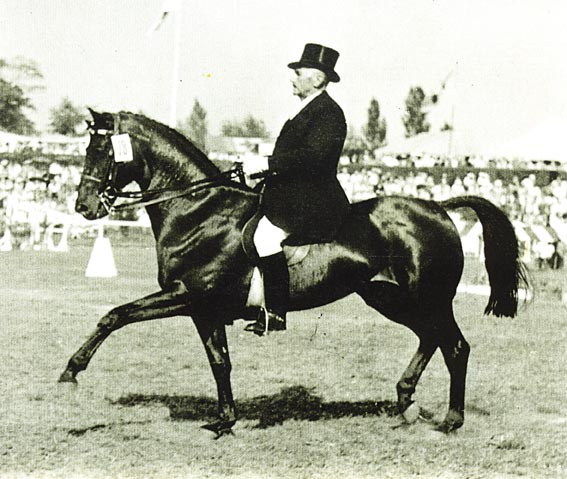
Otto Lörke and the beginning of the ‘modern’ style of dressage
After the Second World War, Lörke was based at the farm of Clemens Freiherr von Nagel in North-Rhine Westphalia, where he continued to train both horse and rider. At the 1956 Olympics, of the German silver medal trio of female riders – Liselott Linsenhoff and Adular, Hannelore Weygand and Perkunos and Anneliese Küppers and Afrika – Lörke was the trainer of two, and his pupil, Willi Schultheis, trained the other. The line of Lörke’s influence goes primarily through his four greatest trainer students: Herbert Kuckluck (and his student, Bimbo Peilicke), Bubi Günther (and his student, Herbert Rehbein), Willi Schultheis (Kyra Kyrklund, Rudolf Zeilinger) and Fritz Tempelmann.
I suppose it is because it took so long for a translation of Gymnasium of the Horse to appear in English, that Steinbrecht is largely unquoted in English language equestrian discourse, a pity since his words make far greater sense than some who are more regularly cited.
Consider: “Correct dressage training, is, therefore, a natural gymnastic exercise for the horse, which hardens its strength and supples its limbs. Such exercise causes the strong parts of its body to work harder in favour of the weaker ones. The latter are strengthened by gradual exercise, and hidden forces, held back because of the horse’s natural tendency towards laziness, are thus awakened. The end result is complete harmony in cooperation of the individual limbs with these forces, enabling the horse to continuously and effortlessly perform, with only the slightest aids from the rider, such regular and beautiful movements as it would demonstrate on its own only fleetingly in moments of excitement.”
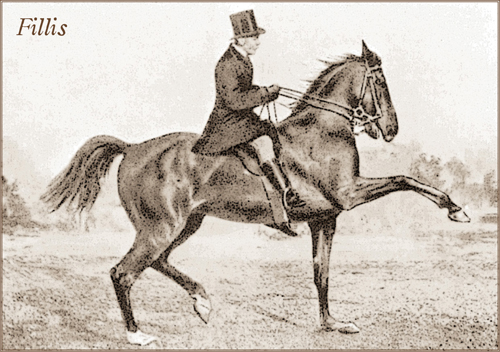
James Fillis was a controversial figure in the nineteenth century
Steinbrecht was opposed to the unnatural school of Baucher – and to his disciples like James Fillis.
Steinbrecht certainly saw his horsemanship as being natural horsemanship as opposed to the artificiality of the French school of Baucher: “The greatest example of such quackery is Mr Baucher, who with the audacity of his claims and the enormity of his promises, has brought the entire equestrian world into uproar and confusion. His method consists in gradually and cunningly robbing the horse of its natural power, which Mr Baucher considers to be the enemy, and to thus make it subservient. He renders his horses so wilted and limp by unnatural bending and twisting in place and so thoroughly robs their natural forward action, that the poor creatures lose all support and are no longer good for any practical purpose.”
And again:
“If I have pointed out in these general comments the difficulties involved in the natural training of the riding horse on a scientific basis, this was not done to frighten amateurs away from the more serious studies of the art, but rather to motivate them from such studies. With a correct view of the principles of this art, it is quite possible to find a way to the desired goal by independent endeavours. Our generation is neither lacking in chivalrous spirit nor in talent, nor in the means to return this beautiful art to its highest flourish…”
“The first prerequisite for reawakening a general interest in the art of riding and a contribution in this respect is the main reason for writing this book is to ban from the art everything that is stiff, forced, and pedantic and to overcome the prejudices that a man on a horse must carry himself in strange posture, and that the dressage horse has to walk around as if screwed into an instrument of torture. Instead, the equestrian art is for both the type of natural gymnastic exercise with which it is possible to attain and demonstrate the highest development of physical strength and skill.”
This passage would seem to me to encapsulate what is important about the Classical Tradition, and with Steinbrecht, the connection between the horse’s natural physical and mental properties and the methods and aims of dressage training – only hinted at in previous texts – is made explicit. This does not mean that Steinbrecht, any more than any of the previous writer / horseman, has ‘the last word’ on the subject, since as Steinbrecht himself stressed, changes in the breeding and the conformation of horses, will produce further changes and refinements but while techniques may change, the basic principles that Steinbrecht discovered in his sixty years of working with horses, remain the rock solid basis on real dressage – the sort that builds a horse up, rather than breaking him down. The sort of dressage that makes your heart sing when you have the privilege of witnessing it…
Consider breeding to Foundation this season. Available in Australia from International Horse Breeders, find out more about this stallion and many more: www.ihb.com.au
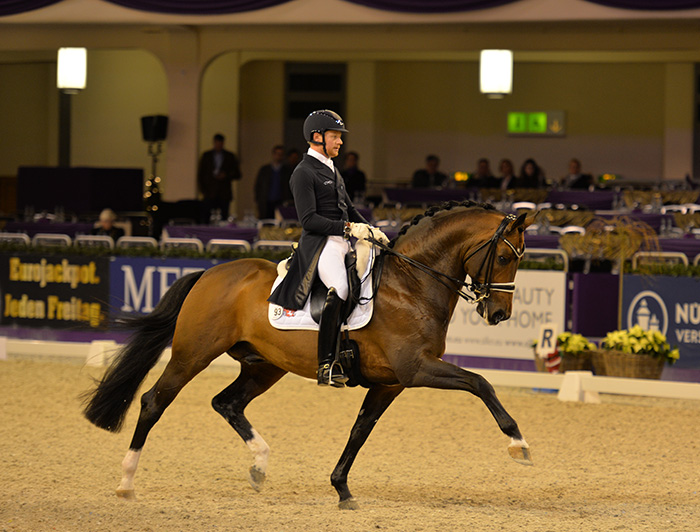


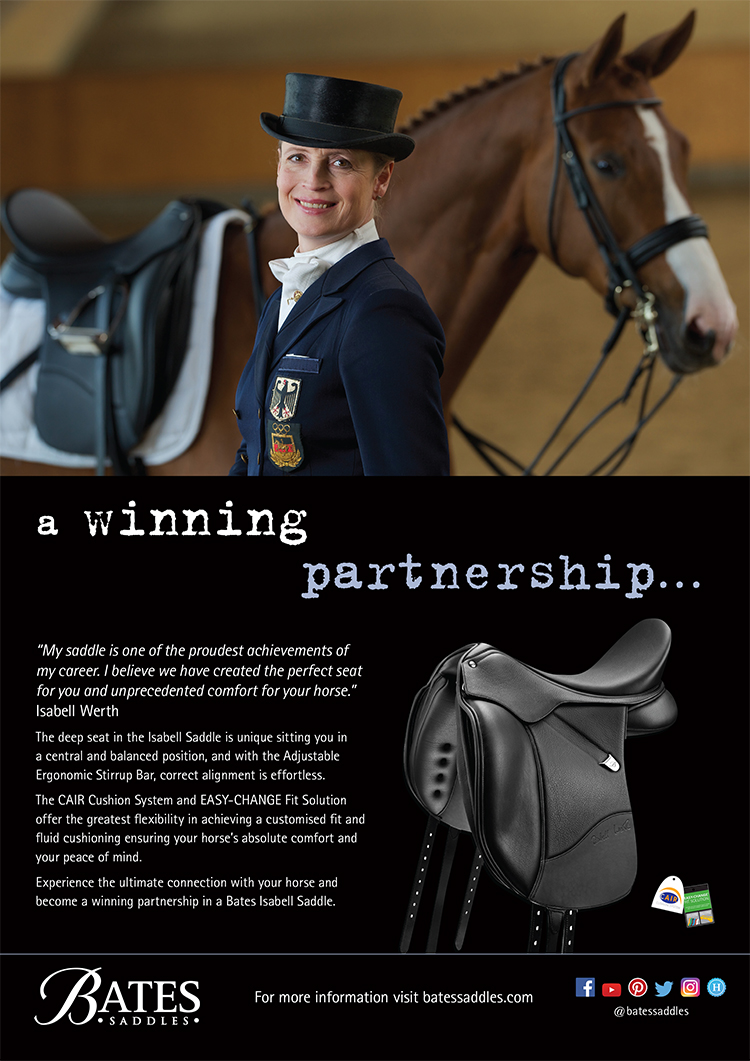
I have listened to Bimbo Peilicher teach at Warendorff, and spent weeks in Portugal being trained by Nuno Oliviera and his son. There was nothihng forced there – Nuno himself would only ride to a background of classical music. I could hear it pouring out of his little school as I walked down from the village every morning.
When we watched him ride it was beautiful,and when the music came to a stop so did he also.
Thanks for the great article! I have produced four of the books mentioned in the article into audio books. This collection of classic audio books includes the first documented book on horsemanship, Xenophon’s The Art of Horsemanship. You will also find The School of Horsemanship by Francois Robichon de la Gueriniere, Nuno Oliveira’s Reflections on Equestrian Art, and The Gymnasium of the Horse by Gustav Steinbrecht.
http://www.audiohorsebooks.com
I think it is a mistake to write that Steinbrecht discovered basic principles in his sixty years and I believe he himself never made any such claim, unlike Baucher. What he did was ‘stand on the shoulders of the giants who came before him’, as Isaac Newton said of himself. Indeed, it is questionable whether he did more than write articulately about what was already common currency. Moreover, everyone loves to quote the warm fuzzy ‘nature’ orientated riding stuff in Steinbrecht whilst almost universally ignoring the exacting detail in what he wrote – which is what Oliveira refers to. So-called ‘Modern dressage’ seems to have entirely lost the ability to ride in Position, for example.